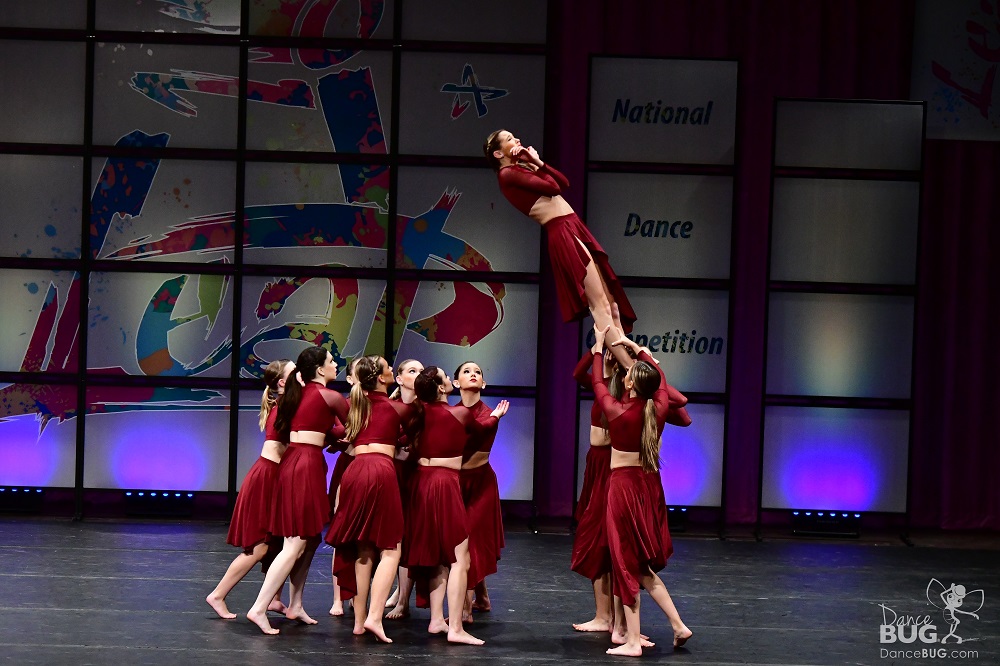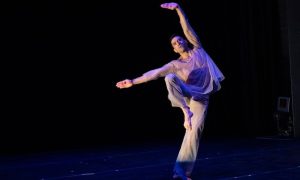Competition season is upon us and for many, that means increased pressure — pressure to perform, pressure to win, even pressure not to disappoint or let down coaches and teammates. While we cannot expect to eliminate the anxiety that often comes from this pressure, we can find ways to address it, manage it and proactively tend to it.
First, we can address the anticipatory anxiety, the anxiety that comes from a lack of uncertainty with regard to the future. We can encourage students to voice their concerns and while we cannot plan for every circumstance, we can ease some anxieties, like a broken strap or a busted seam, with extra materials, emergency sewing kits, etc. More importantly, we can address that while not everything can be controlled, planned or fixed, the show can still go on. And this is not to minimize or invalidate the anxieties, but to help students see that “perfection” is an illusion and that when we focus on the experience rather than the performance or outcome, there is so much opportunity for growth, learning, application and community.
Second, we can help build resilient dancers, who can manage the uncertainty, the unexpected, and even the disappointment or sadness that can come during a competition. Here are some suggestions and things you can practice throughout the competition season.
#1. Practice moving in new and unfamiliar ways to build emotional resilience.
We can build a robust movement vocabulary that supports flexibility of mind and body. Moving in unfamiliar and sometimes uncomfortable ways becomes a metaphor for moving through challenges and uncomfortable feelings. This can be teaching a new combination, exploring improvisation or even some authentic movement.
#2. Bring attention to the present moment.
When we are in the present, we cannot dwell on the past or anticipate the future. Encouraging students to focus on sensations like smell, taste, touch, sight or sound invites them to notice what is happening around them so as not to fixate on the performance or outcome alone. There are many ways to support mindfulness and bodyfulness which ultimately create more connection and grounding to the present.
#3. Create space and time to talk about concerns, worries or fears around competing.
Giving students a dedicated time and place to voice concerns allows an appropriate outlet and can lessen the potential for those worries and fears to pop up at unforeseen or inconvenient times, like right before going on stage. When we practice expressing our emotions, they don’t need to hide. They are allowed to exist and move through us.
#4. Validate and support the person, not just the dancer.
So much of a student’s identity can be tied to their performance, skill or talent. When the student doesn’t perform to expectations, this can take a huge toll on their self-esteem and confidence. Provide opportunities to connect with the person who is dancing, not just the dancer. Encourage students to share their likes, dislikes, hobbies, even things like family or school. This shows students that we appreciate them for who they are, not just what they can do.
With regard to supporting students’ emotional well-being overall and not just anxiety, here’s an acronym to help A.C.E. your mental health in the studio.
Awareness. Invite students to become more aware of their movements and sensations in their bodies.
Challenge. Support students in exploring those unfamiliar ways of moving to support moving through emotional challenges.
Expand. Give students the opportunity to increase their repertoire, including trying forms of dance that they may not excel or compete in.
Anxiety is a reality for many dancers during the competition season, and it does not have to be a reason to leave the competition. Normalizing the anxiety that comes with competition is a step in the right direction, but it needs to be supported and addressed, not brushed to the side. I don’t believe there is anyone who hasn’t experienced fear or worry around a performance or competition. While ignoring it happens, it is not the optimal healthy way to work with and through it. Teaching our dancers to identify, express and manage their anxieties will help them not only during competition season but in all aspects of their lives.
By Erica Hornthal, LCPC, BC-DMT, Dance/Movement Therapist, Chicago Dance Therapy.
Erica Hornthal is a licensed professional clinical counselor and board certified dance/movement therapist based in Chicago, IL. She received her MA in Dance/Movement Therapy and Counseling from Columbia College Chicago and her BS in Psychology from the University of Illinois Champaign-Urbana. Erica is the founder and CEO of Chicago Dance Therapy, the premier dance therapy and counseling practice in Chicago, IL. As a body-centered psychotherapist, Erica assists clients of all ages and abilities in harnessing the power of the mind-body connection to create greater awareness and understanding of emotional and mental health. For more, visit www.chicagodancetherapy.com.
Photo courtesy of Leap! National Dance Competition
















